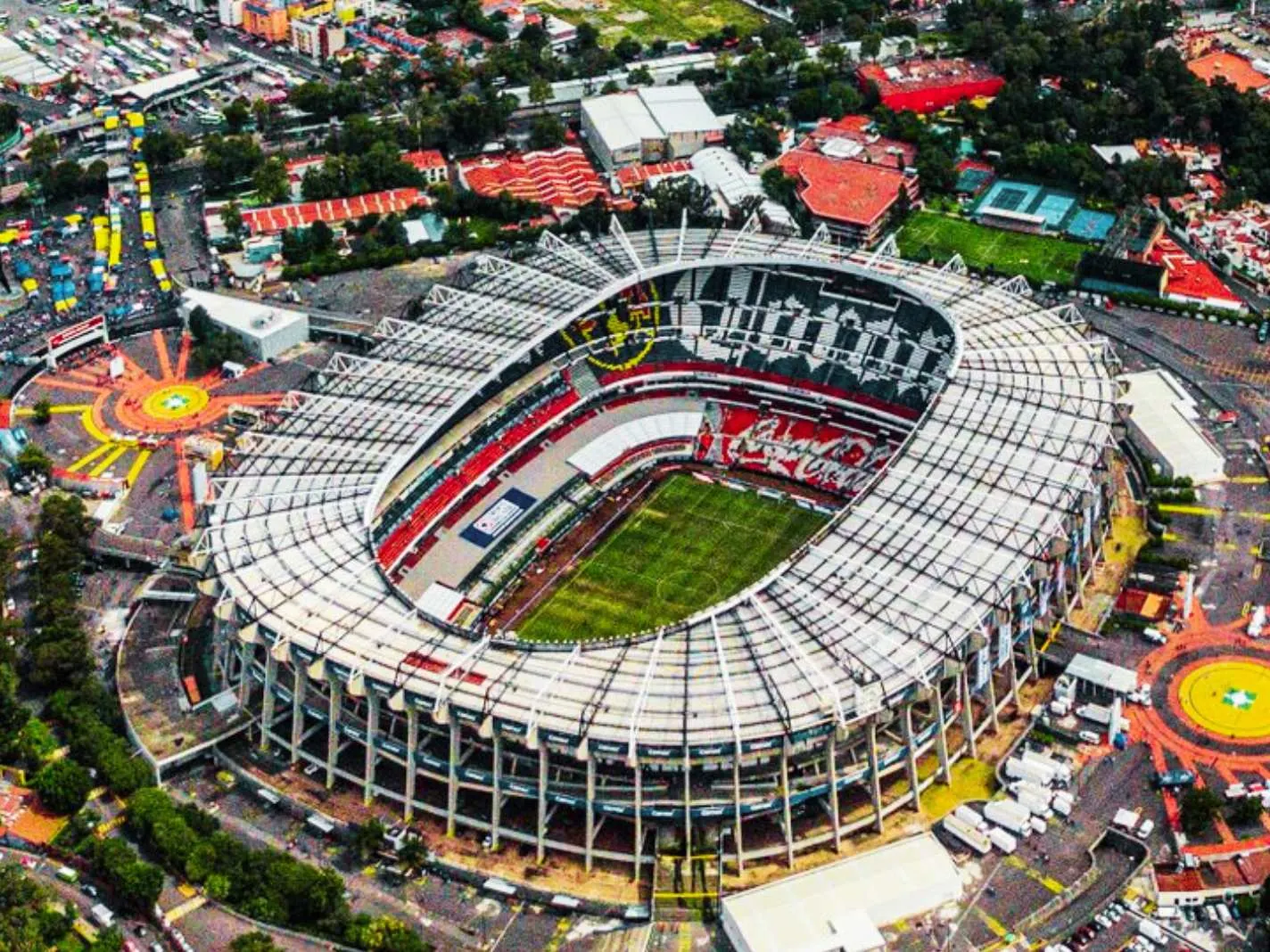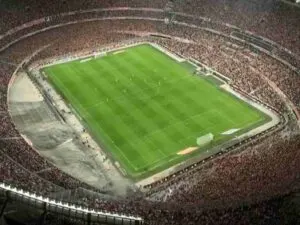We’re still reminiscing about the last 2022 World Cup, and the lights are already aglow for the upcoming 2026 World Cup.
The 2026 World Cup promises to be exceptionally speical, being the largest football tournament to date. It will consist of a 104-game competition involving 48 teams, taking place in 16 host cities across three countries: Canada, Mexico, and the United States.
We still have a couple of years to get the party started, but FIFA has already begun their preparations as they have already revealed the official venue for the tournament opener.
The FIFA World Cup 2026 will kick off at Estadio Azteca Stadium, located in Mexico City, on June 11.
The Azteca Stadium will become the first venue to host FIFA World Cup games in three separate editions after 1970 and 1986. Its selection is a nod to history, honoring a stadium that has witnessed some of the most epic moments in football and beyond.
This was the very same stadium that had witnessed the infamous ‘Hand of God’ by Diego Maradona in the quarterfinals of the 1986 World Cup against England. So, hold your seat for this 2026 World Cup is going to be one for the history books of the tournament.
Stadium Overview
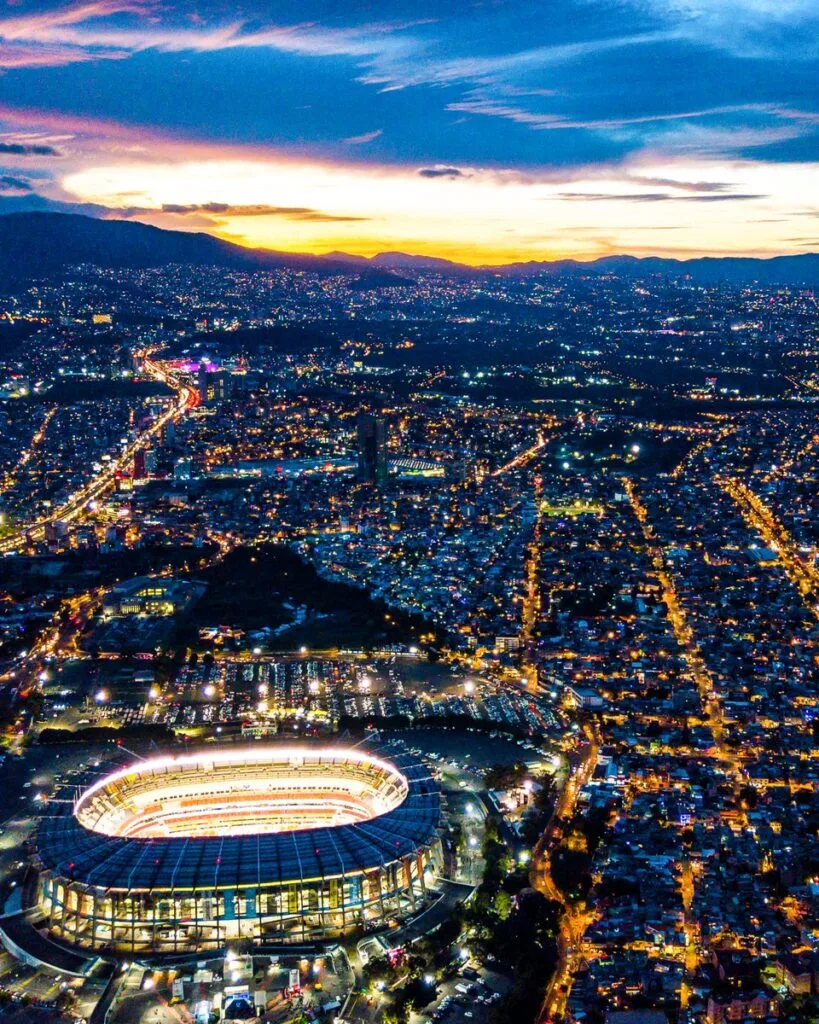
The name “Azteca” pays homage to the Aztec heritage of Mexico City, and the stadium is currently owned by the Mexican multimedia conglomerate Televisa. Originally envisioned as a key sports venue during the presidency of Adolfo López Mateos for the 1968 Summer Olympics, the Estadio Azteca was designed by architects Pedro Ramírez Vázquez and Rafael Mijares Alcérreca, breaking ground in 1961.
Inaugurated on May 29, 1966, with a match between Club América and Torino F.C., the stadium boasted a capacity of 107,494 spectators. It holds the title of the largest stadium in Latin America and the eighth-largest association football stadium globally. Situated at an altitude of 2,200 meters above sea level, the stadium features a field size of 105 m × 68 m (344 ft × 223 ft) and incurred a cost of 260 million.
Over the years, Estadio Azteca has seen gradual improvements and renovations, including the replacement of seating and the installation of electronic advertising boards. Notably, modern Panasonic LED panels were added in May 2015. The construction of a new hospitality area, and the addition of media boxes and private skyboxes at the upper west stand were all completed in November 2016.
Functioning as the official home of football club Club América and the Mexico national football team, Estadio Azteca is not limited to football events. It has hosted concerts, political campaigns, and even an annual National Football League (NFL) game as part of its International Series.
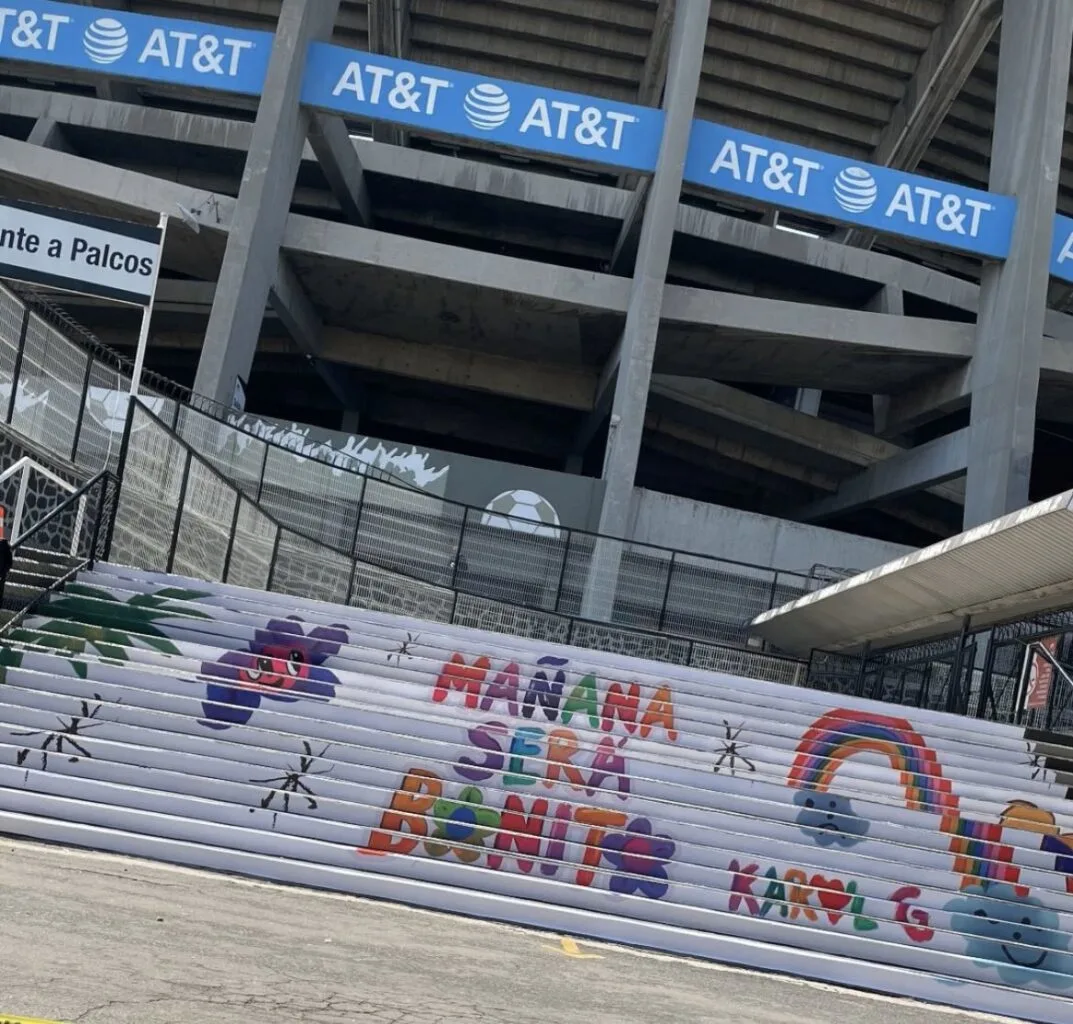
Location
Estadio Azteca is strategically located in Mexico City, the capital and largest city of Mexico. The precise location of the stadium is in Coyoacán, Mexico City.
This prime position places the stadium in the heart of the country, providing easy access for both domestic and international attendees.The stadium’s location is advantageous due to its proximity to major cities within Mexico. Accessibility from cities such as Guadalajara, Monterrey, and Puebla ensures that fans from various regions can easily travel to the stadium. Estadio Azteca also benefits from an excellent connectivity with transportation hubs.
Capacity and Seating
The stadium once held the impressive rank of 5th on the list of the World’s Largest Sporting Stadiums, boasting a capacity of 114,600 spectators. However, following the extensive renovations in 2016, the seating capacity was subsequently reduced to 87,523.
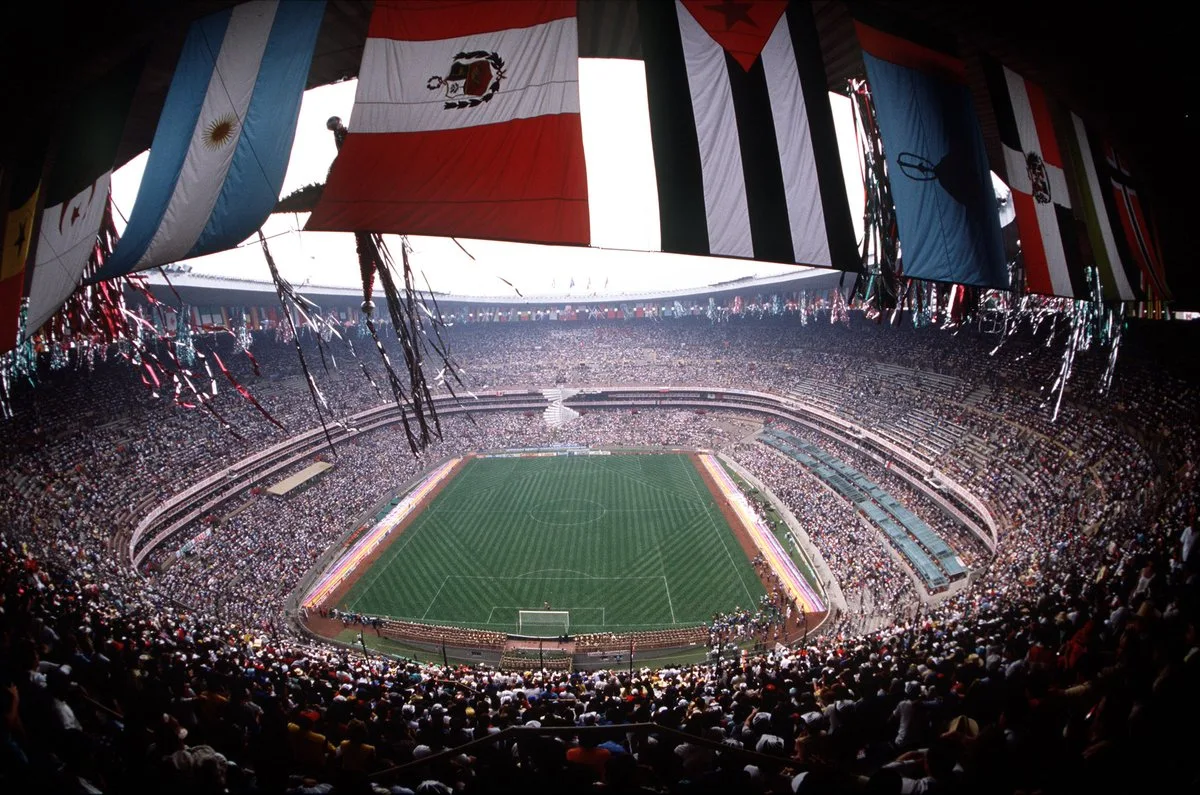
Noteworthy attendance records for the stadium include a football match between Mexico and Brazil on 7th July 1968, drawing a crowd of 119,853 spectators. In boxing, the stadium set a record with 132,247 attendees for the Julio César Chávez vs. Greg Haugen bout on 20th February 1993.
Additionally, there are approximately 856 executive suites within the stadium, enhancing the overall spectator experience. The suites are located at the top of the Premiere Areas on the west side of the stadium, away from the press box.
Technology and Facilities
Estadio Azteca boasts a comprehensive scoreboard that covers the entire stadium bowl. Panasonic screen panels were strategically installed at the north and south ends, enhancing the visual experience for spectators, replacing the phosphorous panels originally implemented in 1998.
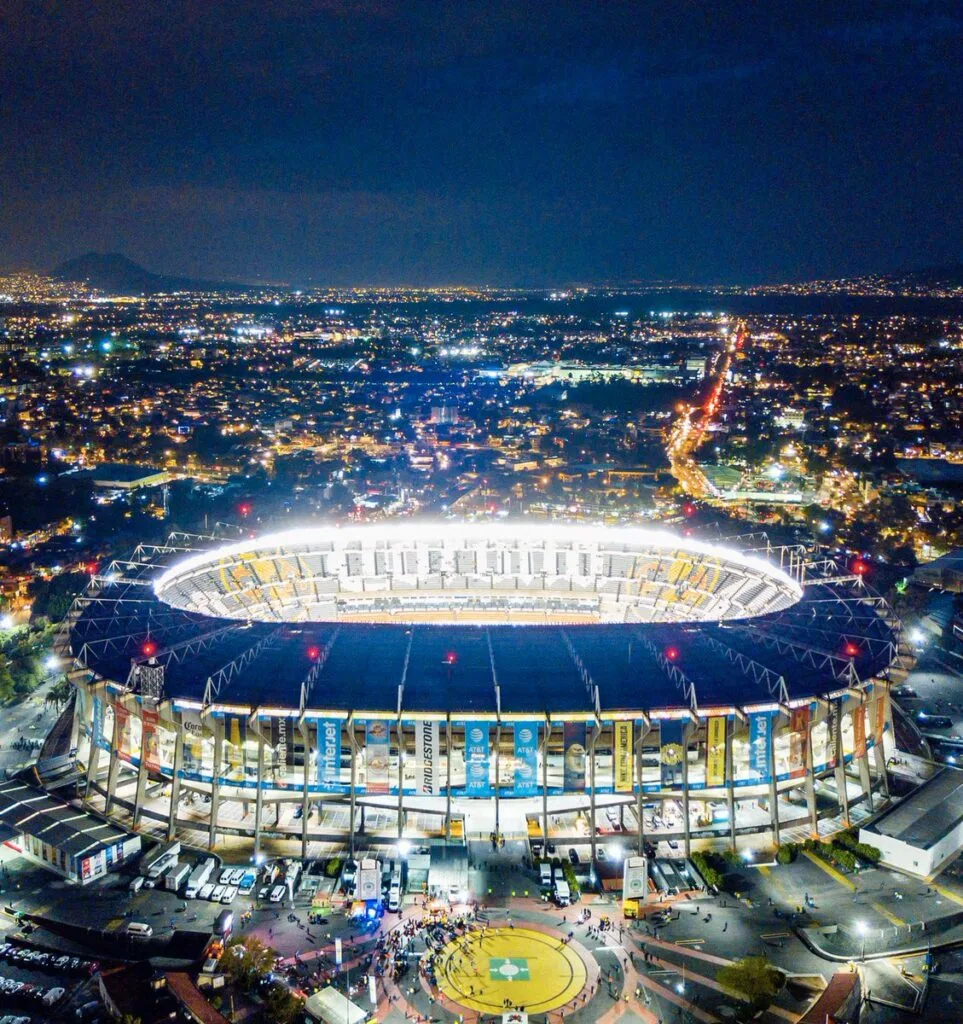
As for the sound part, an advanced 69-loudspeaker system is integrated that is capable of delivering voice announcements, music, and video soundtracks. The lower ring system features 24 CAL 64 loudspeakers and 10 600-HP subwoofers, while the upper ring incorporates 26 CAL 96 loudspeakers and eight CAL 64 loudspeakers.
Outside the stadium, visitors can access the commercial hub named “Foro Azteca,” which reportedly includes a mall, office spaces, two hotels, new leisure areas, and parking for 2,500 cars.
Accessibility is prioritized with wheelchair-enabled entrances and restrooms. The stadium houses three first-aid units located on the first level inside tunnel 16 and on the second level at access 23. Quality concessions further contribute to the overall experience for attendees.
History of Events
Estadio Azteca has played a prominent role in hosting FIFA World Cup matches, having been the venue for nineteen matches across two editions. In the 1970 FIFA World Cup, the stadium hosted ten matches, including the final. Sixteen years later, during the 1986 FIFA World Cup, Estadio Azteca held nine matches, including the final, marking the second time a World Cup final was played at the stadium.
Estadio Azteca stands as the exclusive football stadium where both Pelé (1970) and Diego Maradona (1986) secured their FIFA World Cup victories, solidifying their places among the greatest football players of all time. It served as the main venue for the football tournament during the 1968 Summer Olympics and the 1971 Women’s World Cup.

In a historic moment, the stadium witnessed the first international regular-season game in the NFL on October 2, 2005, featuring the San Francisco 49ers and the Arizona Cardinals.
Beyond sports, Estadio Azteca has showcased musical performances by renowned artists such as Michael Jackson (with five sold-out shows in 1993), Menudo (1983), and Paul McCartney (2012 and 2017).
The stadium has also been a venue for political events, including Mexican president Felipe Calderón’s campaign closure in 2006, religious events like Jehovah’s Witnesses conventions, and the visit of Pope John Paul II in 1999. Notably, Nigerian Pastor T.B. Joshua conducted a two-day Christian crusade at the stadium, drawing an estimated 150,000 attendees.
In a different context, Estadio Azteca also hosted the public funeral service for the popular Mexican comedian Roberto Gomez “Chespirito” Bolaños on November 30, 2014, attended by 40,000 spectators.
Environmental Initiatives
The stadium has demonstrated a notable commitment to environmental sustainability. In a move towards increased energy consumption awareness, traditional lamps were replaced with high-quality LED stadium lights.
Additionally, the stadium has formed a partnership with the Green Education Foundation to launch the Neighborhood Donation Recycling Station (NDRS). This initiative highlights the commitment to sustainable practices, particularly in the realm of sports textile recycling, setting a noteworthy example in the landscape of environmental consciousness within sports venues.
Security And Safety Measures
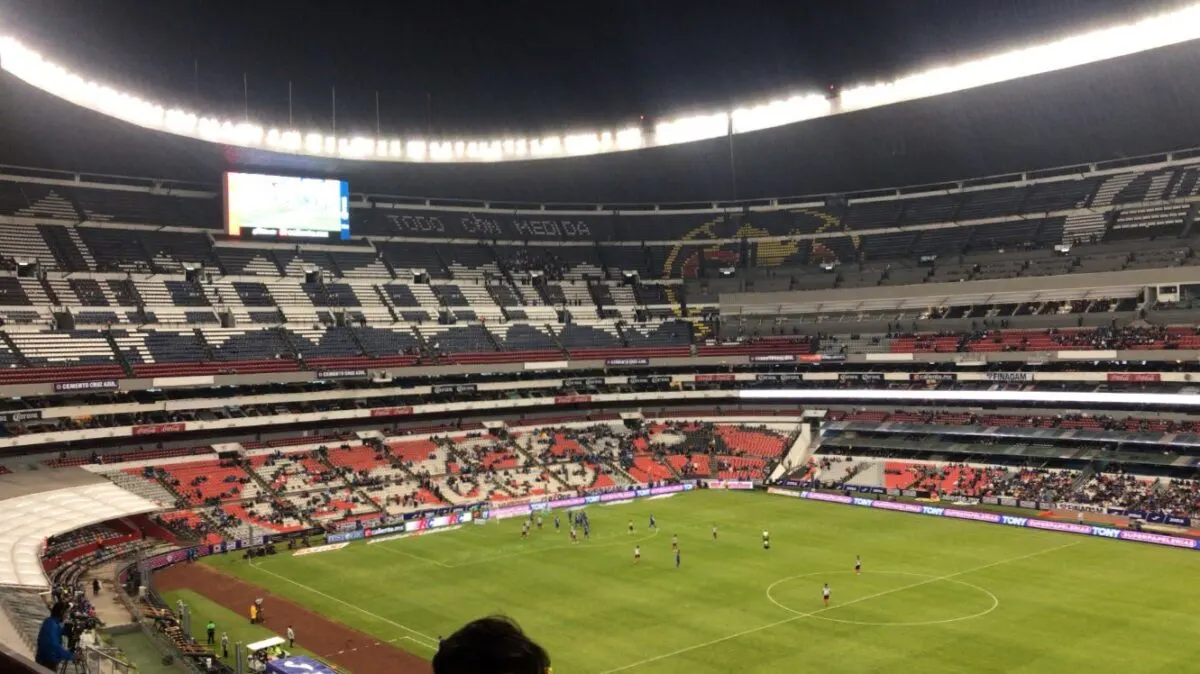
Estadio Azteca places a strong emphasis on ensuring the safety of attendees during events, employing a comprehensive set of security measures. The stadium is equipped with an ample presence of security personnel positioned throughout the venue for every event. These personnel include Auxiliary Police from Mexico City, Private Security, and Monitors. Rigorous security checks are conducted at each entrance to enhance safety protocols.
In addition to the visible security personnel, the stadium is well-prepared in terms of pre-hospital care, featuring a dedicated team of physicians, paramedics, and ambulances. This setup ensures the provision of prompt first-aid attention in case of any emergencies that may arise during events. The overall safety infrastructure at Estadio Azteca is designed to prioritize the well-being of all attendees.
Fan Experience
Whether resonating with the cheers of football matches or the melodies of concerts, the crowds at Estadio Azteca seldom fail to impress with their fervent voices.
Yet, occasional fervor can escalate into chaotic scenes, marked by intense jostling and disorderly lines, as witnessed during a 2022 confrontation between football fans and the police after a Cruz Azul versus Atlético San Luis game. Although no arrests or injuries were reported, such incidents underscore moments of tension.
Despite sporadic challenges, Estadio Azteca maintains its status as an iconic venue for live events. The stadium management enhances the experience by offering guided tours, allowing fans to delve into the rich history and distinctive features of this celebrated sports and entertainment facility.
Tickets can be obtained from the front ticket office, located near the exit ramps from the Azteca station. Prices range from as little as MXN$100 (approximately US$5 as of 2016) to MXN$500 (around US$26 as of 2016) for more high-profile matches.
Local Impact
Local residents near Estadio Azteca have expressed concerns and protested against the proposed expansion known as Conjunto Estadio Azteca, set to take place ahead of the 2026 World Cup. The residents fear that this expansion project could pose threats to local water supplies and living conditions.
Additionally, there are concerns about the potential increase in the cost of living, reduced housing availability, and a shortage of drinking water in the neighborhood.
On the contrary, the community and businesses surrounding the stadium can anticipate positive outcomes from hosting the World Cup final and multiple other games in the 2026 World Cup. The event is expected to attract more tourists, with an estimated economic impact exceeding $1 billion.
According to a FIFA study, a city hosting the World Cup can generate approximately $400 million in spending, offering potential economic benefits for the local community and businesses associated with the stadium.
Accessibility
To access Estadio Azteca, you have several transportation options.
You can use the Azteca station on the Xochimilco Light Rail line, an extension of the Mexico City metro system. This station is well-connected to the city’s metro system at Tasqueña station. The Azteca station is heavily used and is a 15-minute walk from the stadium.
Alternatively, you can opt for the Mexico City Metro subway for a convenient journey. If you prefer a faster commute, taking a taxi is available, taking approximately 15 minutes at a cost between $100 and $130.
For those traveling by bus, there is a direct service between Mexico City and Estadio Azteca. Buses depart from Base Cetram Taxqueña and arrive at Tlalpan y Estadio Azteca.
If you’re driving, the distance between Estadio Azteca and Centro is 16 km, and it takes about 14 minutes to drive. For attendees driving to the stadium, parking is available four hours before the event, such as soccer games, at a cost of 120MXN.
The Estadio Azteca light rail station is also situated in Colonia Ex-Ejido de Santa Úrsula, approximately nine miles (15 kilometers) from the historic center of Mexico City.
Accommodations
There are many hotel accommodations all around the stadium, including Cadillac Hotel Boutique, Hotel Parque México Boutique, Casa Romita, Camino Real Santa Fe, and Hotel Parque España and more. In line with the customary practice for host cities during the World Cup, the prices for these hotels are anticipated to rise as the event approaches.
In the southern area of Mexico City, there is an abundance of traditional cuisine and street food. Numerous dining options near Estadio Azteca, such as Tortas Gigantes sur 12, Porfirio’s Coapa, Sonora Grill Coapa, and Restaurant Parque Asturias, showcase the vibrant and diverse culinary scene of Mexico City.
Visitors attending the game at Estadio Azteca will have the opportunity to explore these local eateries and indulge in the rich flavors that the southern area has to offer, including local delicacies like Hound Dog Coapa, Saideira Churrascaria, and Las Delicias del Pacifico.
If you find yourself with some spare moments before the game, explore local tourist gems such as the Museo Diego Rivera Anahuacalli, Museo Nacional de Antropología, or Museo del Tiempo Tlalpan. Take a quick tour of the nearby Jardin Centenario park or stroll through the narrow cobblestone streets of San Angel. For those wanting to capture the bustling essence of the city, a marketplace tour in Bondabu is an option. Additionally, there are serene spa centers for relaxation and enjoyment.
Sure, roaring during the World Cup opener is something to look forward to, but don’t forget to make the most of your time in the city while you are at it.

